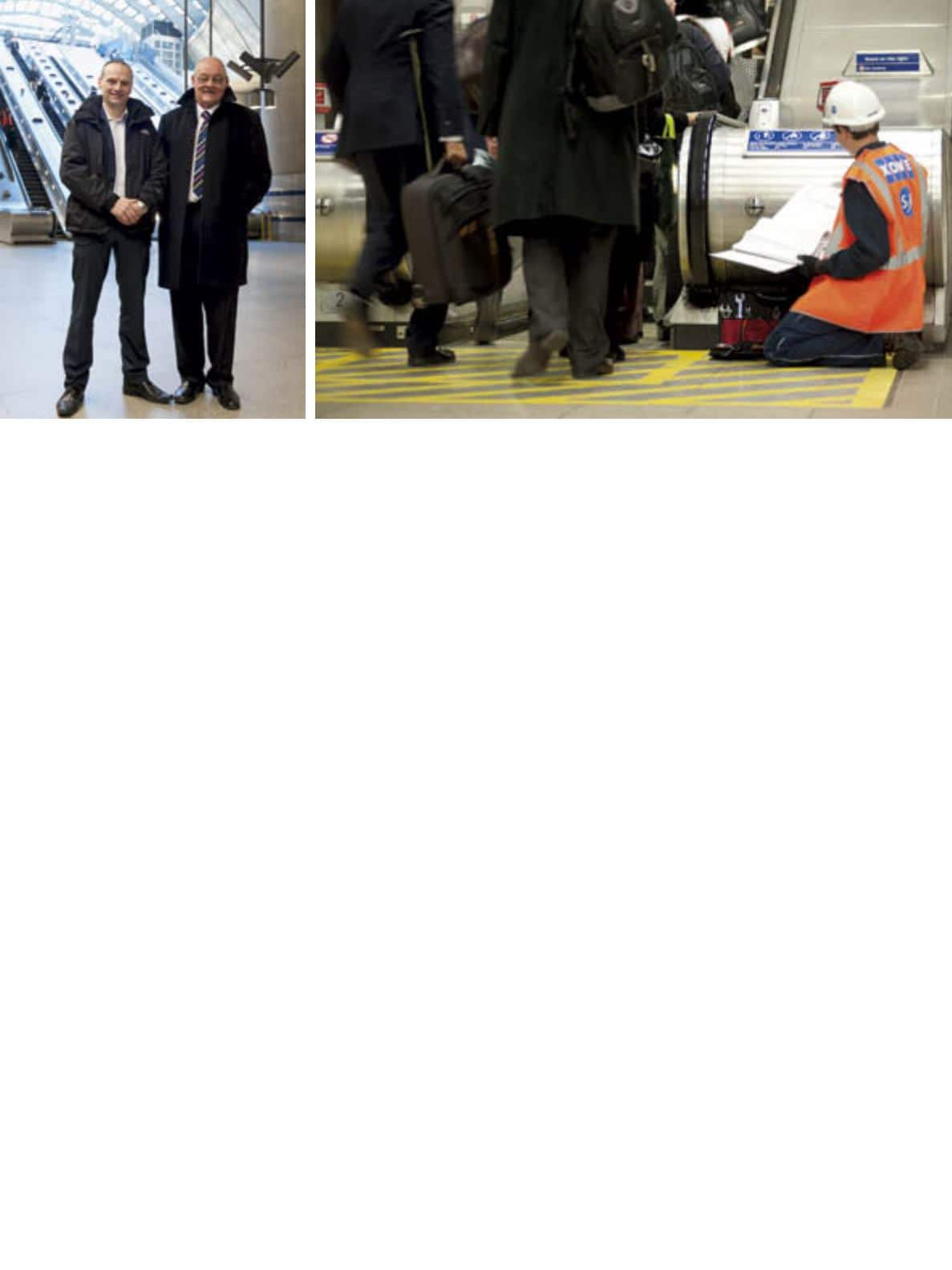

| PEOPLE FLOW
20
“Escalators are the main form of
transport for getting people in and out
of stations. An out-of-service escalator
would create massive problems for
London Underground,” says Lawrie.
“We ensure that everything runs
smoothly by having the right people
ready to attend to call-outs and repairs
around the clock. We also stock a wide
range of spare parts, so that if we do
get a problem we are able to respond
immediately.”
CheCking in
KONE has a strong service culture and
this is one of the key factors to the
successful partnership with the London
Underground. “We are proactive,
accessible 24/7 and flexible in maximiz-
ing the maintenance window, which is
during the wee hours of the night – a
unique situation that could only occur
with such a busy underground system,”
says Lawrie.
Russell Rowland
, the London
Underground’s Elevators and Escalators
Maintenance Manager, confirms that
all its partners need to have a strong
service culture as part of their corporate
philosophy. “This ethos is essential in
ensuring the efficient operation of the
London Underground,” he adds.
The recent 2012 London Olympics
proved to be a stress test for the London
Underground with KONE providing
numerous solutions during the games.
“Following the triathlon event, there
were half a million people in Hyde Park.
The Marble Arch station escalators were
exit only; and Lancaster Gate was the
main entry,” says Rowland, adding that
the automatic operation system was
turned off to meet peak demand.
“KONE service technicians, who
were on standby throughout the
Olympics, were positioned at Lancaster
Gate station and manually operated
the elevators down to the Tube,” he
explains. “We successfully moved
500,000 people through this hotspot.”
Responsive to needs
In addition to responding to changing
situations, KONE is committed to pro-
viding solutions from structural planning
to high quality equipment and mainte-
nance.
KONE works with the London
Underground at every phase of a
project’s life cycle – even before com-
missioned equipment exists.
Michael
dunne
, the London Underground’s
Lead Discipline Engineer for elevators,
explains a little more about the process.
“Once a tender is successful, we set
up a workshop to look at station access
and site-specific issues such as interface
with the existing systems. We assess
the intercom, CCTV cameras and the
rest of the physical structure. We then
work with suppliers to identify the best
possible equipment to meet our needs,”
he sums up.
The KONE MonoSpace® is one of
the elevator types used by passengers in
the London Underground. Over the last
four years, the organization has ordered
35 of these units, enhanced to meet the
London Underground specification, as
part of its Step Free Access projects at a
number of stations.
“We are able to monitor the elevator
and escalator equipment from the
KONE E-Link™ system, a facilities
management back room,” says Dunne.
WoRking fRoM the gRound up
The KONE-London Underground
partnership began in 2000, when the
extension of the Jubilee line – London
Underground’s biggest expansion
project in over 20 years – took place.
“We installed 118 KONE escalators
and 34 KONE elevators, so that was
really the start of the relationship,” says
KONE’s Lawrie. KONE provided the
Above left: Russell Rowland (left) and Michael Dunne from the London Underground have worked with KONE since 2000. Above right: KONE
service technician, Dan Levine, ensures an escalator at the Canary Wharf station runs in peak performance during the morning rush.



















